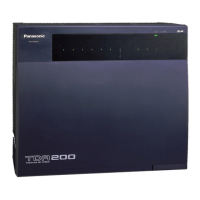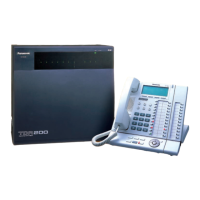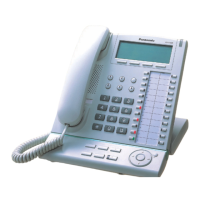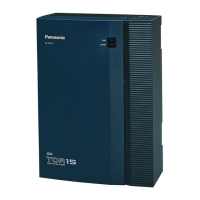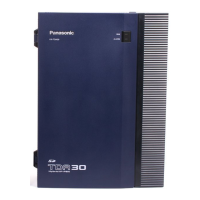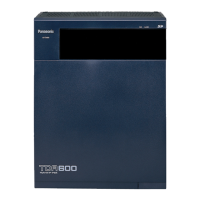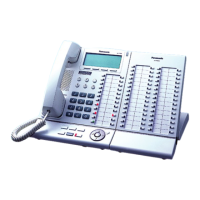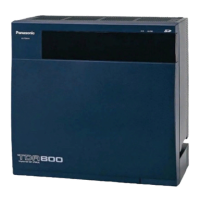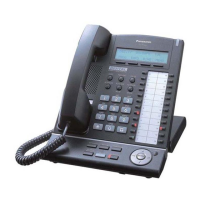The Busy on Busy feature works when the destination for the Intercept Routing—Overflow in an Incoming
Call Distribution Group feature is not assigned in one of the following conditions:
a. There is no space in the Waiting queue.
b. The Queuing Time Table is not assigned and there are no extensions logged-in.
[Example of a)]
There are five assistants in a shop. When the answering agent number is "2", and the queuing call number
is "0":
If two of the assistants are talking on the phone, the next caller will hear a busy tone to prevent the caller
from thinking that there is no one in the shop or that the shop is closed.
Conditions
[Intercept Routing—Overflow in an Incoming Call Distribution Group]
• If the Overflow time expires, and the overflow destination is unavailable:
a. If the trunk call arrives through the LCOT/CLCOT or T1 (LCOT/GCOT) card:
(1) If the call was once in a queue and an outgoing message (OGM) was sent to it, or the call reached
an incoming call distribution group by using the DISA feature (® 1.17.6 Direct Inward System Access
(DISA)): The line is disconnected.
(2) In all other cases: Redirection is ignored and the Overflow timer activates again.
b. If the call arrives through another card: Redirection is ignored and the Overflow timer activates again.
[Busy on Busy]
• If a trunk call arrives through the LCOT/CLCOT or T1 (LCOT/GCOT) card, a busy tone will not be sent to
the caller.
PC Programming Manual References
5.13 [3-5-1] Incoming Call Distribution Group—Group Settings
→Overflow Queuing Busy
→Overflow No Answer
5.15 [3-5-2] Incoming Call Distribution Group—Queuing Time Table
PT Programming Manual References
[625] Destination for Overflow Time Expiration
[626] Overflow Time
[627] Destination When All Busy
[628] Queuing Call Capacity
[632] Maximum Number of Agents
Feature Guide References
1.2.2.4 Queuing Feature
60 Feature Guide
1.2.2 Incoming Call Distribution Group Features
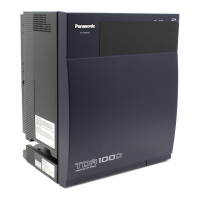
